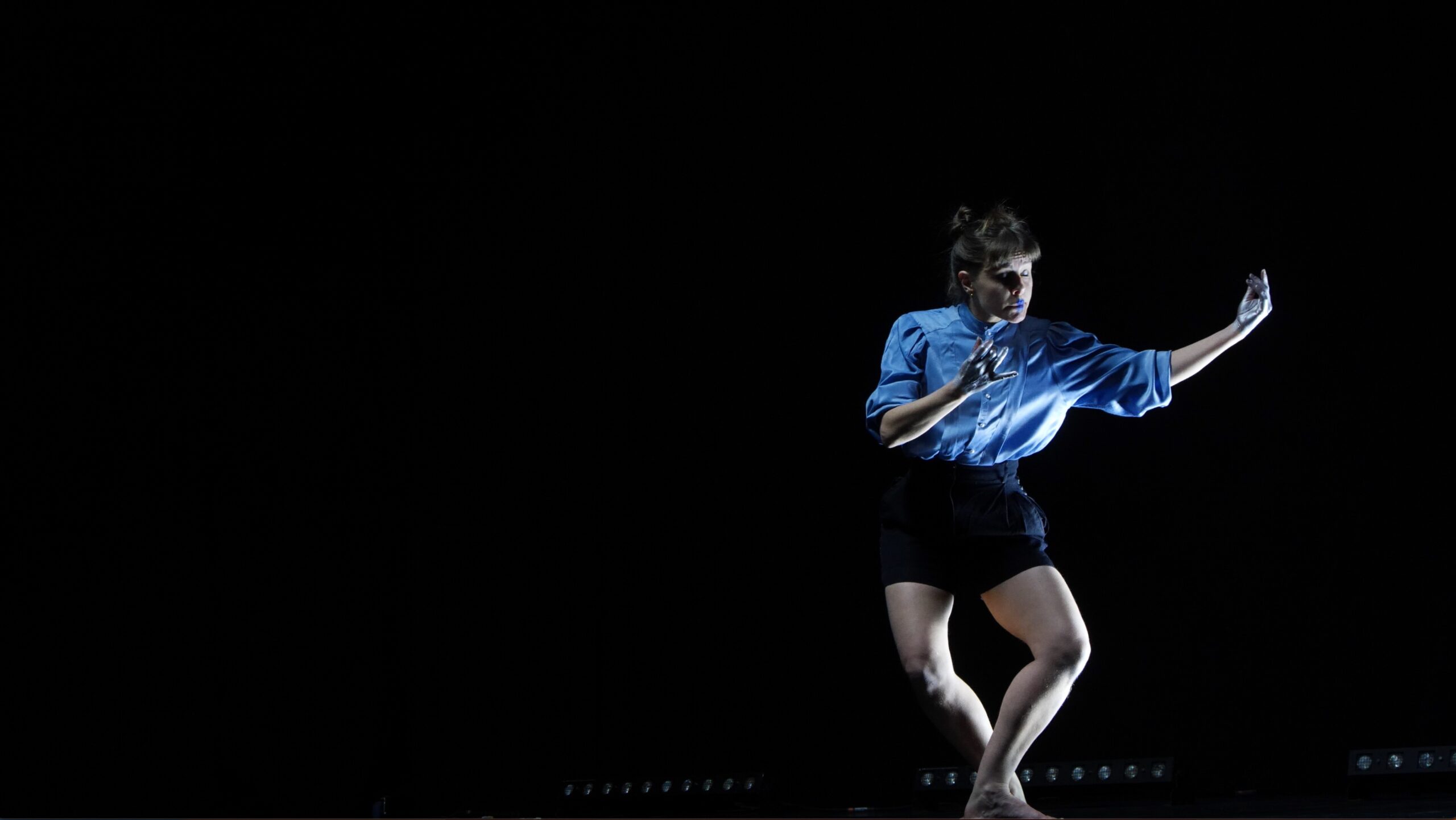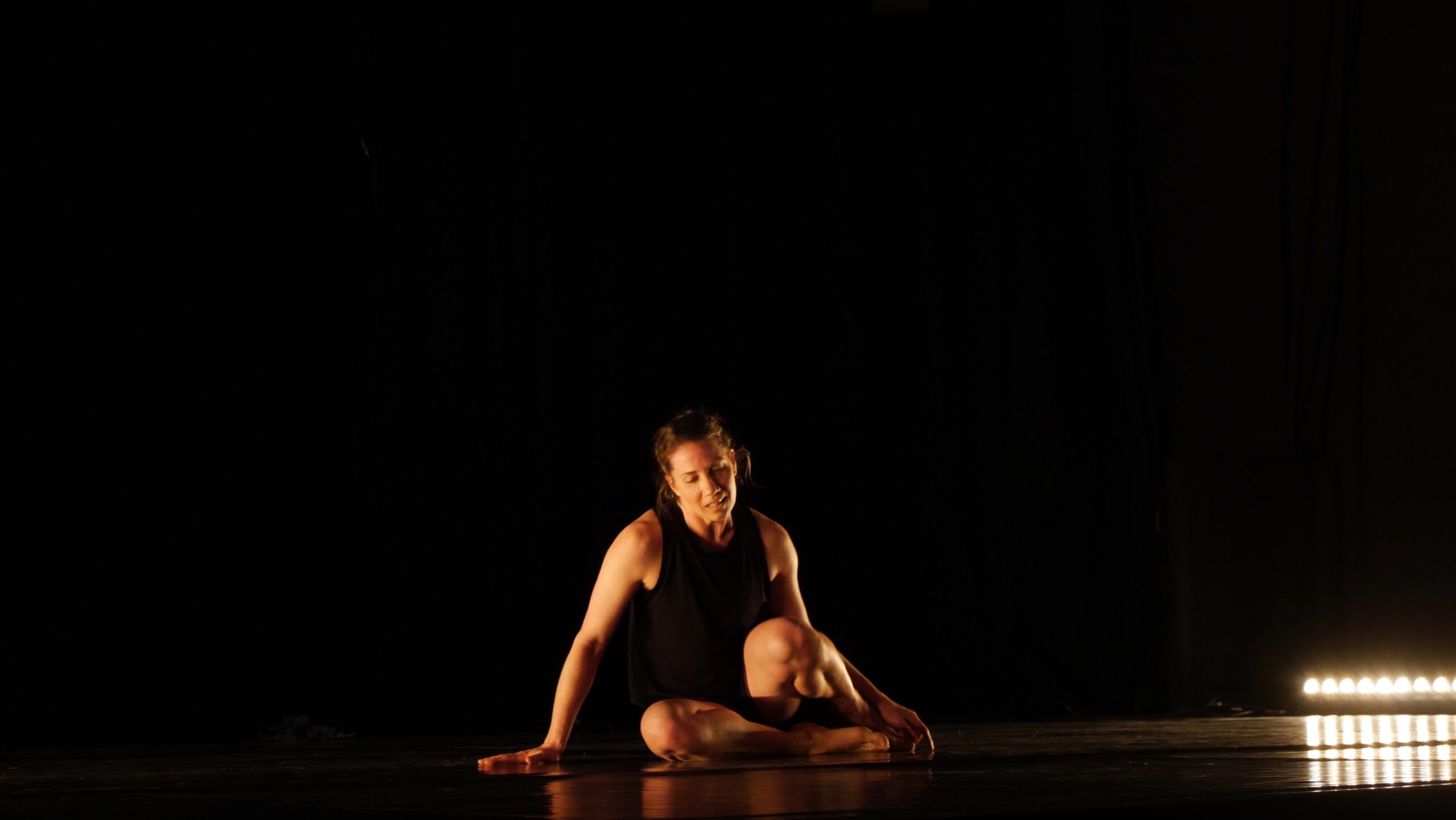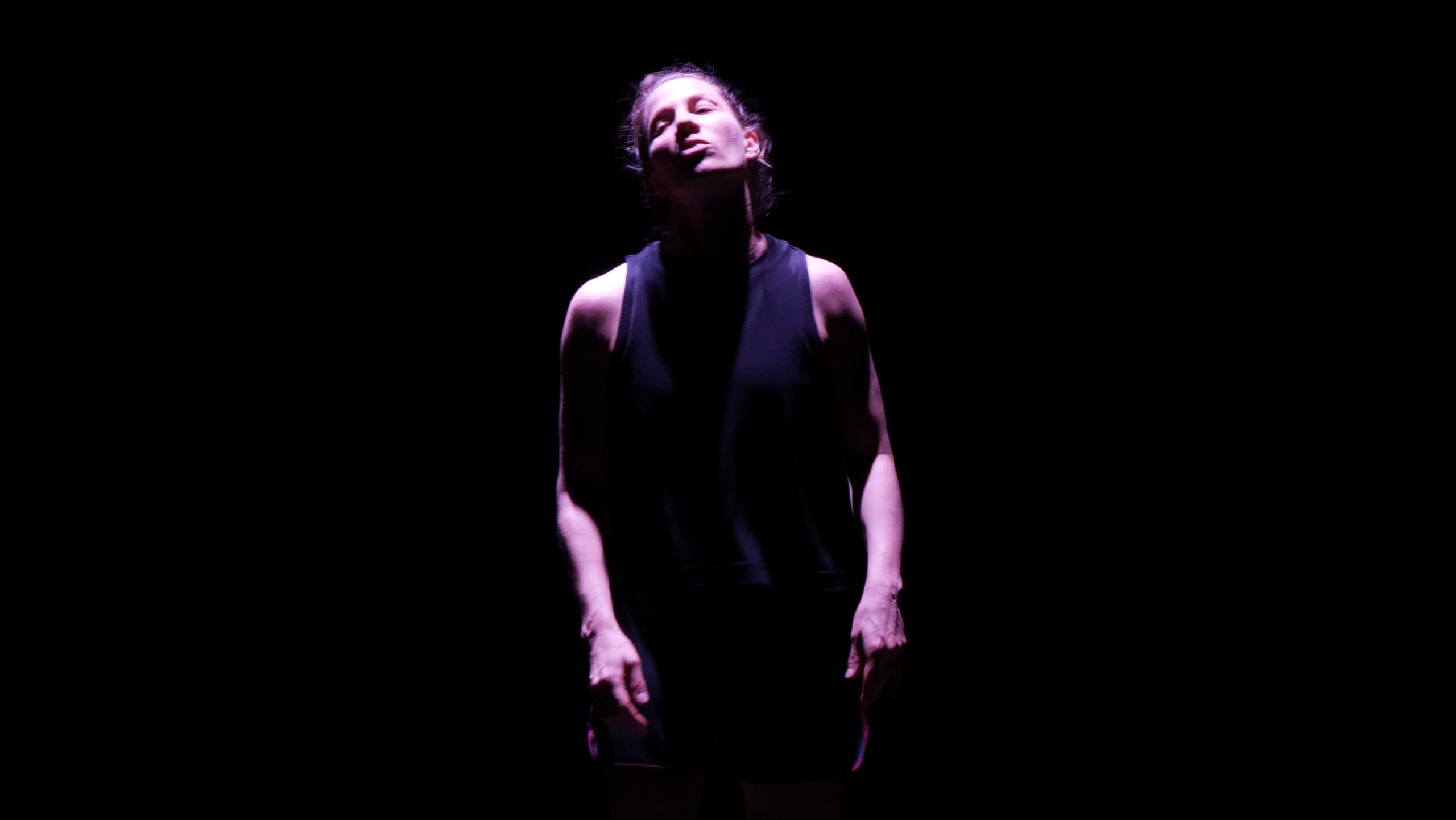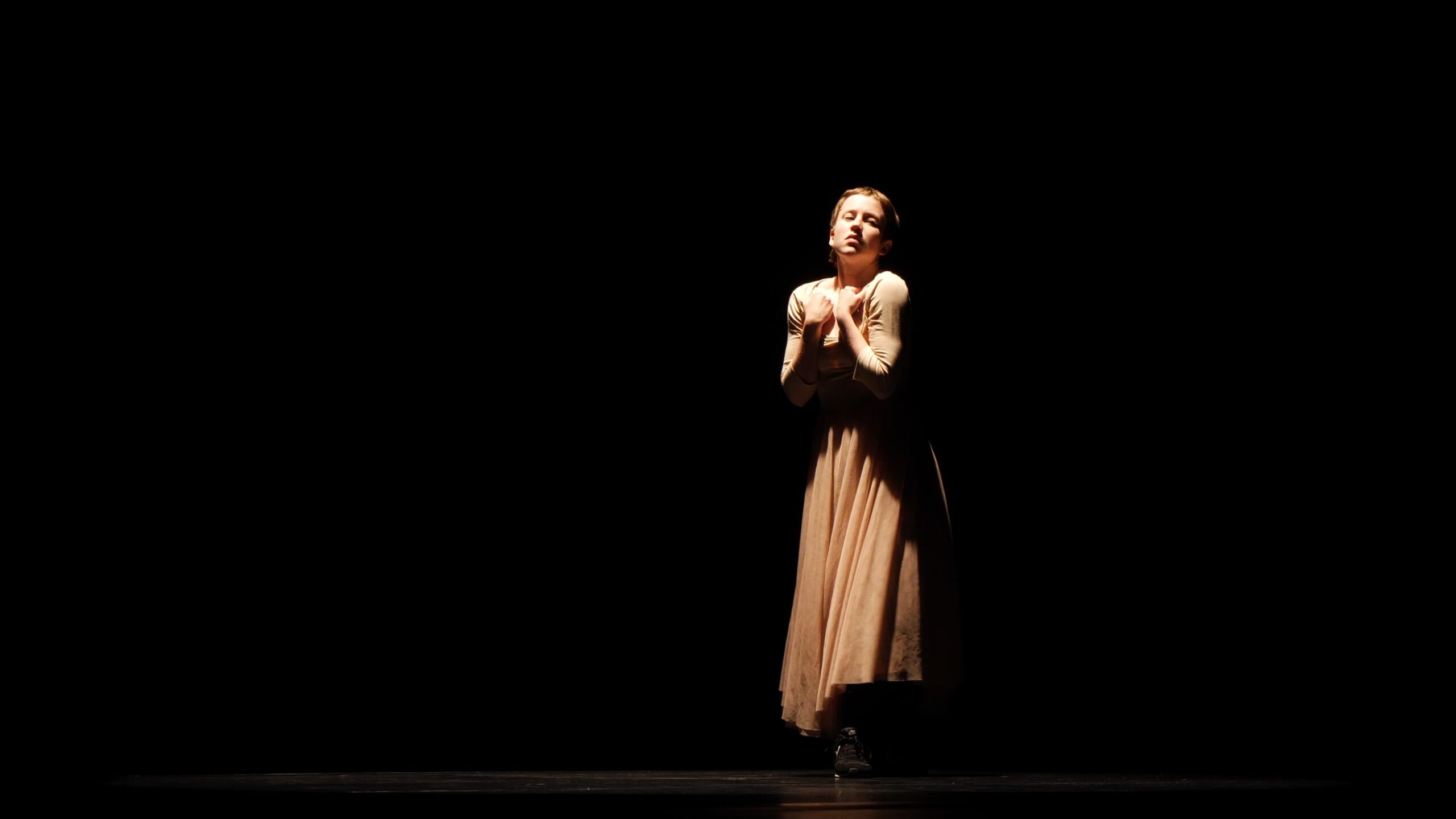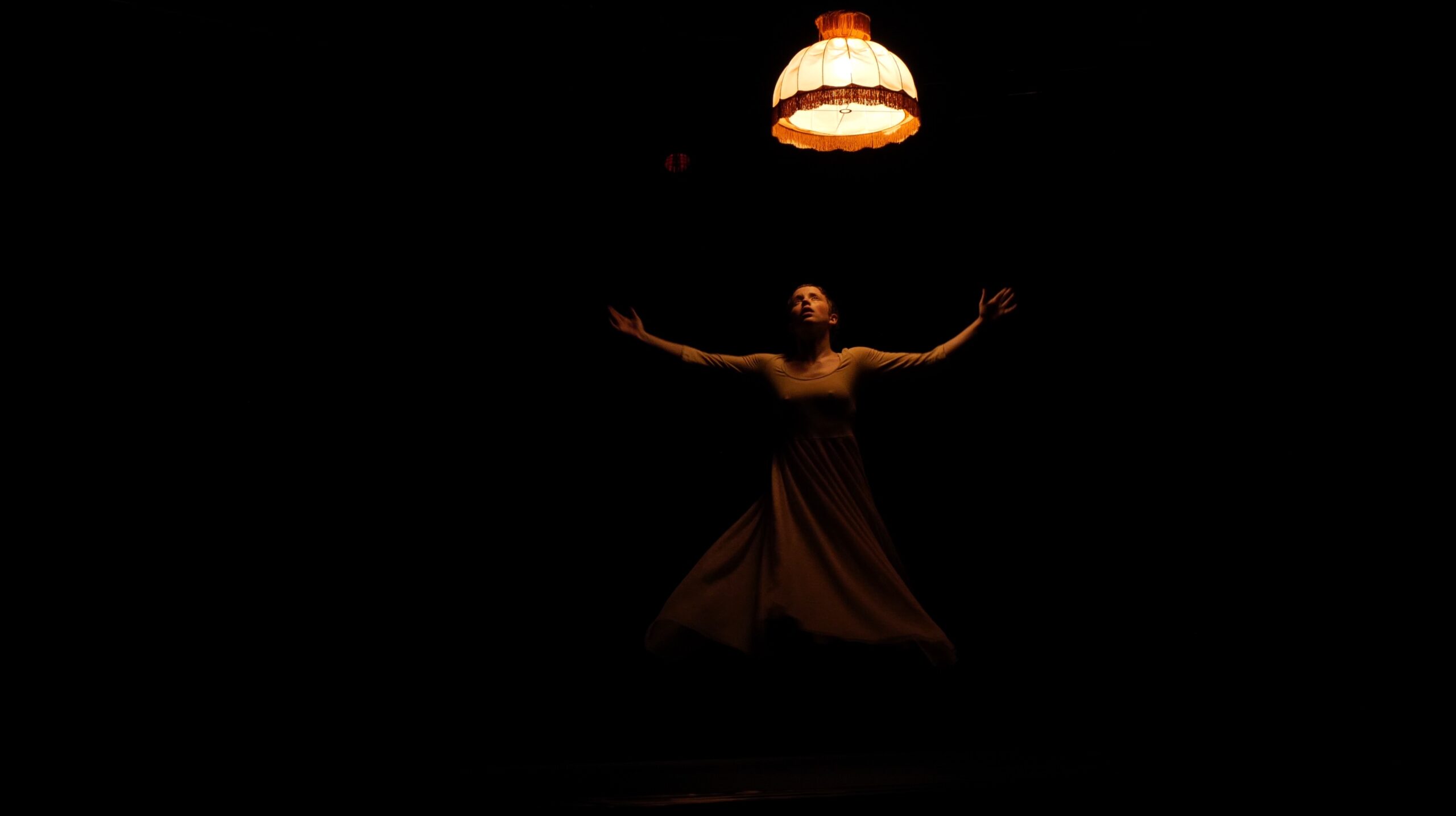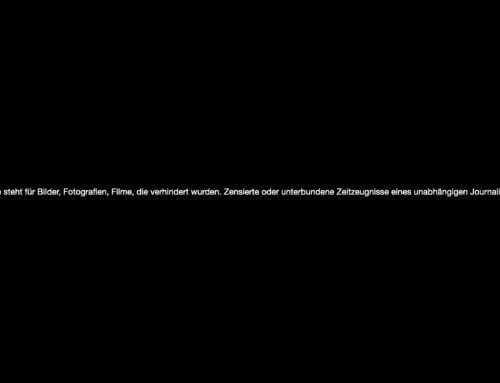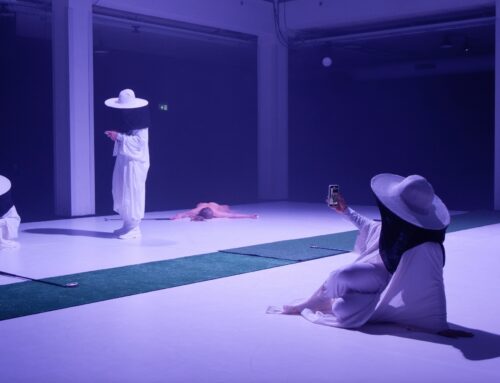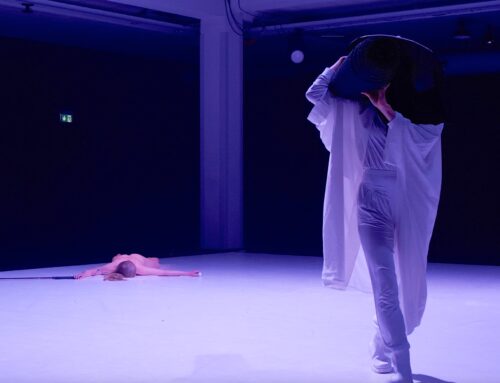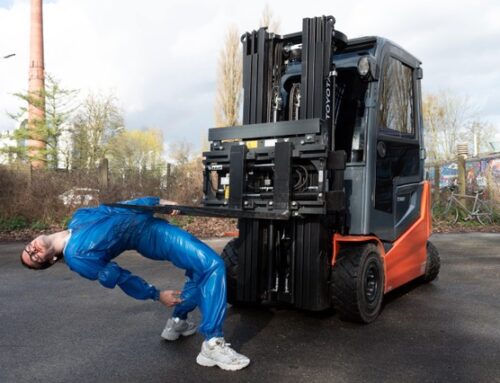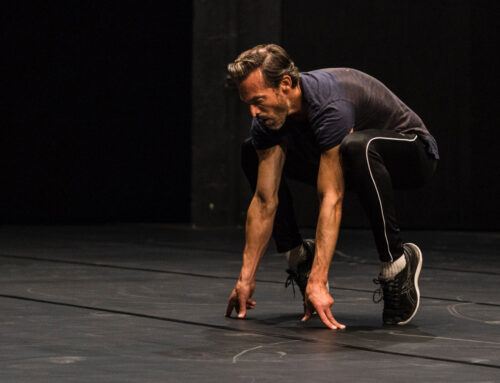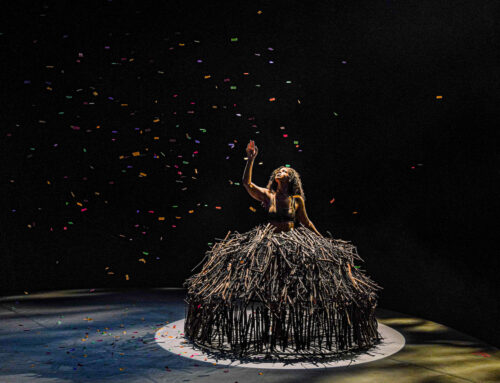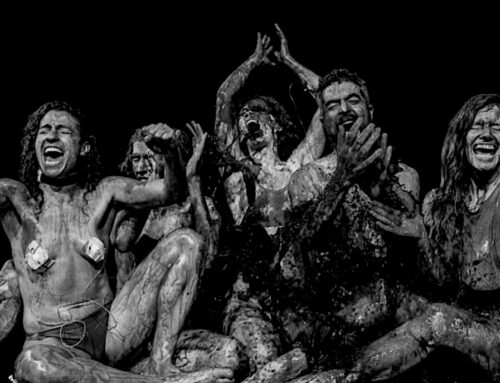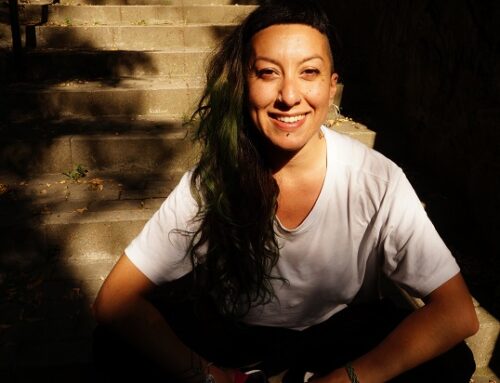schrit_tmacher justdance! Festival now open also in Eupen | B :
It echoes…
‘Triptych’ with solo dance pieces by Fanny Brouyaux, Loraine Dambermont and Leïla Ka at the Alter Schlachthof Eupen
By Natalie Broschat
Since 2017, the Alter Schlachthof Eupen, which primarily presents circus and theatre, has been part of schrit_tmacher just dance! and cooperates with its 30-year-old neighbouring festival in Aachen as part of its own festival ‘Scenario’, which is celebrating its 24th edition this year. And in 2025, a very special dance form will be presented there: the solo. Three young choreographers contribute three wonderful solos under the title ‘Triptych’: ‘To be schieve or a romantic attempt’ by the Belgian Fanny Brouyaux, ‘Toujours de 3/4 Face’ by Loraine Dambermont, also from Belgium, and the award-winning ‘Pode Ser’ by the successful and globally sought-after French dancer Leïla Ka.
‘To be schieve or a romantic attempt’ by the Belgian Fanny Brouyaux
Fanny Brouyaux, who was sponsored by the Reseau Grand Luxe network in 2023/24, will open the sold-out Saturday evening and combine the ‘nervous moods of the Italian composer Paganini’ with spasmophilia syndrome in her solo. The syndrome is also known in German-speaking countries as ‘chronic tetanic syndrome’, occurs with magnesium deficiency or hyperventilation and manifests itself through increased neuromuscular excitability. The violin virtuoso and composer Niccoló Paganini (1782 – 1840) was famous for being afraid of his violin and not being able to twist his joints, which is known among experts as Marfan syndrome. The high concentrations of mercury contained in many medicines of the past certainly contributed to his poor health. However, he invented violin fingerings that only he could master, was popular with women and demonised by men, and was even said to have made a pact with the devil because he could play the violin so well. One of his specialities was the perfect interplay between a simultaneous wild bow stroke with the right hand and a difficult pizzicato with the left hand; plucking the strings with the fingers independently of the bow stroke. Movements and physical characteristics that Fanny Brouyaux explores in her solo.
She is initially cloaked in silence, her blue silk blouse and black shorts complementing her silver-painted hands and the thick blue stripe of colour above her lips perfectly. She stands calmly at the edge of the stage, her hair tied back in a plait, and starts to move with ever-increasing flinching movements. She positions her hands as if there were a violin between them and plays them briefly and eruptively. While Paganini played his violin, he often spread one leg, which is also physically quoted in Fanny Brouyaux’s work, like the over-fluttering fingers. Slowly, she develops a special quality of movement: she puts her hands on her hips, circles her arms, bends her head and in this choppy physicality is also reminiscent of a bird. It gets dark and she swaps her blouse for a short black blouse and undoes her plait. In this concert attire and surrounded by dangerous, erotic light, she moves in a familiar manner. But she seems to want to free herself from the ‘schieve’ (Belgian dialect for twisted or crazy). The crazy bird wants to come to rest, to escape the gaze of the audience. At first imperceptible, the music by Patrick Belmont and Yann Leguay then becomes more and more driving, and Fanny Brouyaux develops into her or a self before everyone’s eyes. Until, at the end, she stands silently in front of the audience again and breaks out into a final, eccentric gesture. Black Out. She has created a powerful dance requiem for Paganini.
‘Toujours de 3/4 Face’ by Loraine Dambermont
As soon as the projector is running, we continue with the solo ‘Toujours de 3/4 face’ by Loraine Dambermont. A high-energy solo in which she embodies the speech of the same name and the combative calls and gestures of the Belgian Johnny Cadillac. The audience hears Cadillac explain over the loudspeakers ‘comment se battre’, i.e. how to fight; that the frontal body must never be exposed in a fight, otherwise the attack surface is of course far too large. The corresponding, very amusing video can be seen on YouTube. In the course of the piece, Loraine Dambermont now abstracts the movements and makes them completely her own. She takes on the exuberant masculinity in a concrete way and precisely imitates the combat announcements and movements. Each of Cadillac’s ‘BamBam’ is physically on point, again and again. Dambermont takes the movements further, making them softer and more expansive, taking up the entire stage and thus transforming them into a dance-like quality. The solo takes on a life of its own and is supported and fuelled by the sound of Victor Petit. The way Loraine Dambermont has taken Johnny Cadillac’s concrete movement vocabulary into her female body and transformed it into something powerful and new is truly impressive. Her choreography creates a trance-like maelstrom in which she alternates between struggle and empowerment with suppleness and precision.
‘Pode Ser’ by Leïla Ka
Leïla Kas‘ solo “Pode Ser”, with which she has been on tour since 2018 and which can be seen in a shortened version on arte.tv, brings the “Triptychon” to a close. The French dancer-choreographer found her love of dance in urban dance, danced in the world-famous dance classic ‘May B’ by Maguy Marin, now choreographs for major companies and was able to present her work during the Cesár awards in February 2025.
However, she no longer dances ‘Pode Ser’ herself, but has commissioned the equally fabulous dancer Anna Tierney to present this penetrating work, which looks very similar to the younger Leïla Ka. The short hairstyle, which Leïla Ka no longer wears, is essential for the solo, which deals with the big question and search for one’s own identity. The associations and views on gender attributions change in a matter of seconds. Either initiated by Anna Tierney or by the outside world. A brief change of light, both arms crossed in front of the chest over the beige-coloured dress and immediately everything is different. Man? Woman? Non-binary? When the black sports trousers are uncovered and the torso wrapped in the dress reveals a different, equally powerful and jagged quality of movement, the complexity and androgyny of this person on stage shines brightly. Anna Tiernay moves through this physical and personal story at lightning speed, creating a strong ending to this incredibly powerful evening of dance by three women whose special solo pieces will resonate for a long time to come.





